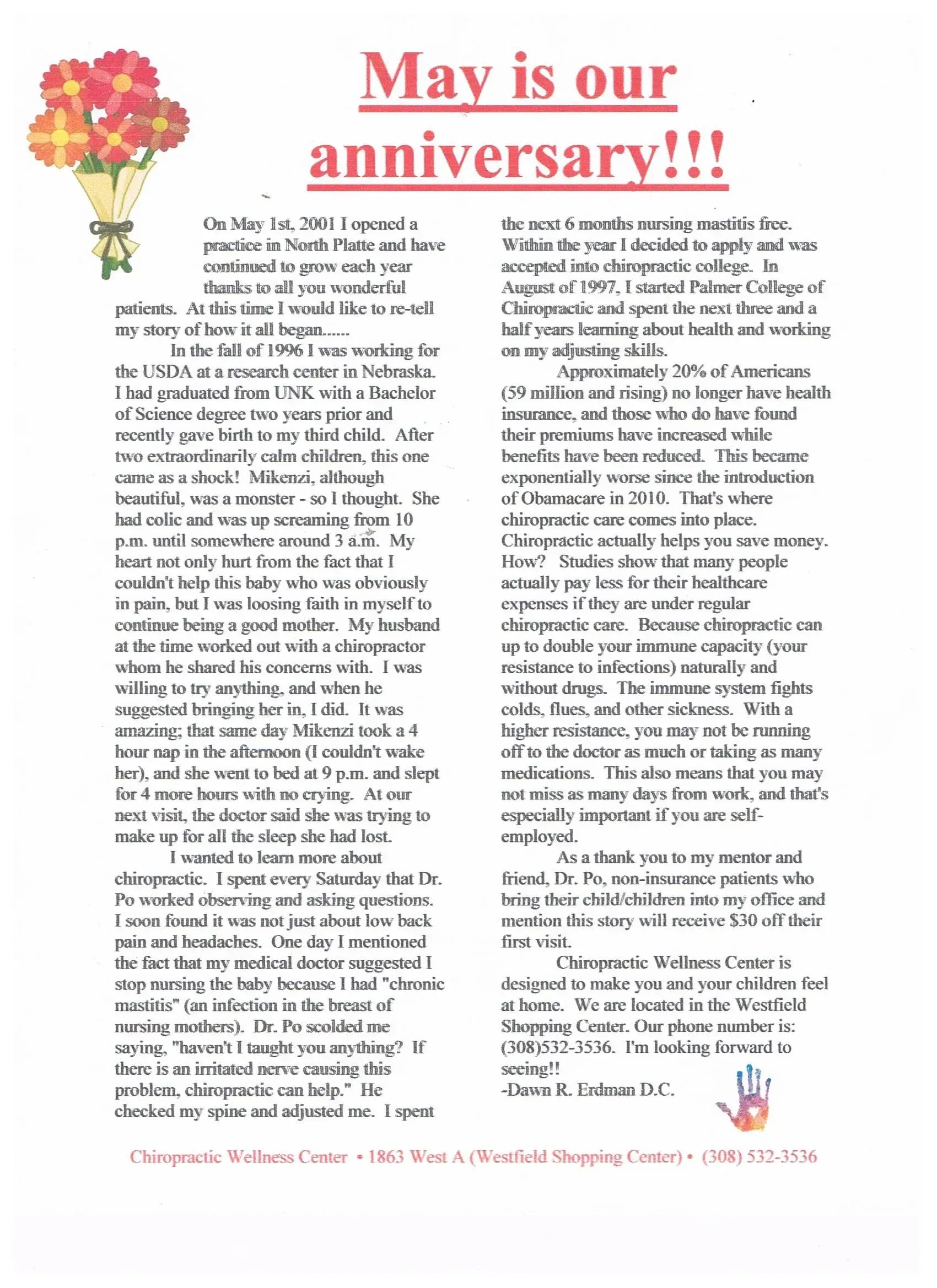Newsletter
Chiropractic Wellness Center provides expert care using the Gonstead System to relieve pain, improve mobility, and enhance well-being for all ages in a welcoming environment.
Our Newsletter

What is subluxation?
Subluxation simply stated, is a misalignment of one of the bones of the spine that results in nerve irritation and malfunction. This nerve irritation can lead to a variety of health problems. The brain sends messages to every organ, tissue and cell of the body through the spinal cord and spinal nerves. There are 31 pair of spinal nerves that pass through the openings between each spinal bone or vertebrae. These nerves, once they've excited the protection of the spine, branch out many times to reach their target organ, tissue or cell.
When your spine is out of alignment inflammation sets in. There are 5 cardinal signs of inflammation: heat, pain, redness, swelling, and loss of function. Most of the time it is the swelling rather than the misaligned bone that puts pressure on the nerve and causes it to malfunction. When a nerve is not working properly the organ, tissue or cell it supplies will not work properly either. This cannot only lead to pain but other things you may not readily associate with your spine. For example, irritation of the nerve supply to the lungs can make it difficult to breathe and may even lower your resistance to lung infections. An article by Ader on neuro-immune connections shows nerve endings in direct contact with lymphocytes and macrophages. These immune cells are one of our first lines of defense against infection. This is why regular chiropractic care has been proven to boost immune function.
As you can see, chiropractic care is not just for back pain and headaches, it is for overall health!
What Causes Subluxation to Occur?
There are a number of things in person's life that can cause subluxation to occur and reoccur after they have been corrected. All sorts of stress to the body can cause us to need adjustments, sometimes even before we have symptoms. The kinds of stress that are most often incurred are mechanical, emotional and chemical. Often referred to as 3 the T's - Trauma, Thoughts and Toxins that we encounter everyday play an important role in spinal health and therefore our overall health.
Trauma can be subdivided into two categories: Macrotrauma and Microtrauma. Macrotrauma is a force of significant injury to the body as a one-time event. A few examples are falls, accidents, surgery, jarring sports, amusement park rides, and childbirth (both mom and baby). Microtrauma is mechanical stress that is repetitive or unevenly distributed. Even though small, over time these habits can cause serious problems. Examples are poor posture, worn out shoes, text and telephone use, sleeping position, leg crossing, and computer use.
The Impact of Toxins, Stress, and Subluxation on Your Health
Toxins are foreign to the body and must be processed by detoxifying centers, mainly the liver. The added stress to the body can settle in weak areas leading to subluxation. Examples of this are low-fiber diet, excessive alcohol, pop or coffee, cigarette smoking (smokers have been found to have 20% more back problems), and inhalation of strong fumes.
Negative thoughts, mental or emotional stress affect us in more ways than we realize. Muscle tension, headaches, and stomach aches are most recognizable, but know that others do exist. Ex) chronic anxiety, post-traumatic stress disorder, repressed memories, suppressed hostility, job stress (includes excessive workload, loss of job or change in duties), financial burdens, death, and difficult personal relationships.
It is important to realize that although the original causes of a person's subluxation may have been trauma, the cause of a relapse or length of recovery is dependent upon a combination of all these stresses.
Get In Touch With Us Today
Reach out to Chiropractic Wellness Center for expert care and pain relief. Call us, visit our office, or schedule an appointment online. Our friendly team is here to help you feel your best. We look forward to assisting you!
